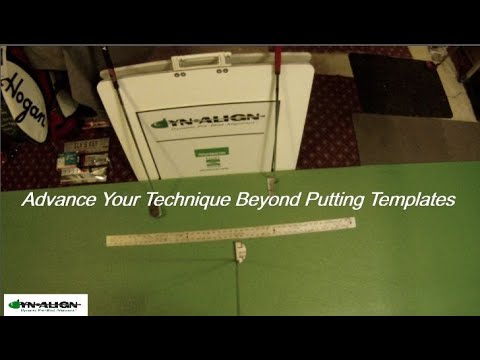Best Of Both Worlds
Using a putter that does not create torque, and a stroke that naturally travels on a stable arc path, can both reduce practice time and improve consistency when putting on the course.
Putting templates, either printed on a surface or as training aides, are used to train a golfer’s putting stroke to travel on a constant arc in order to provide for more accurate alignment of a putter face at impact.
Golfers spend a lot of time practicing a putting stroke that matches a described arc in hopes to recreate an arc path during play. A golfer must make certain that random motion in the hands, wrists, or arms, does not cause the clubhead to travel inside or outside an arc path.
The vulnerability of this training method is found in the potential for motion in a golfer’s joints, and their susceptibility to random motion as force is applied to the shaft by both the golfer and torque designed into the putter.
The adverse effect of putter torque can be reduced by increased grip pressure in the dominant hand but that can reduce a golfer’s sensitivity and interfere with distance control when applying force to the stroke.
Use of a putter that does not create torque when put into motion is one way to eliminate the necessity to stabilize the stroke by added grip pressure in the dominant hand.
Using a soft end-range alignment technique to stabilize a golfer’s joints can greatly reduce the need for a golfer to try to force a putter to travel on an arc path, since the club is supported by stable joints and will more naturally travel on a stable arc path once it is put into motion.
To learn more about how to use a soft end-range motion alignment technique, please visit www.dynaligngolf.com
#puttingtemplates #puttarctrainingaid #softendrangeputtingalignment







